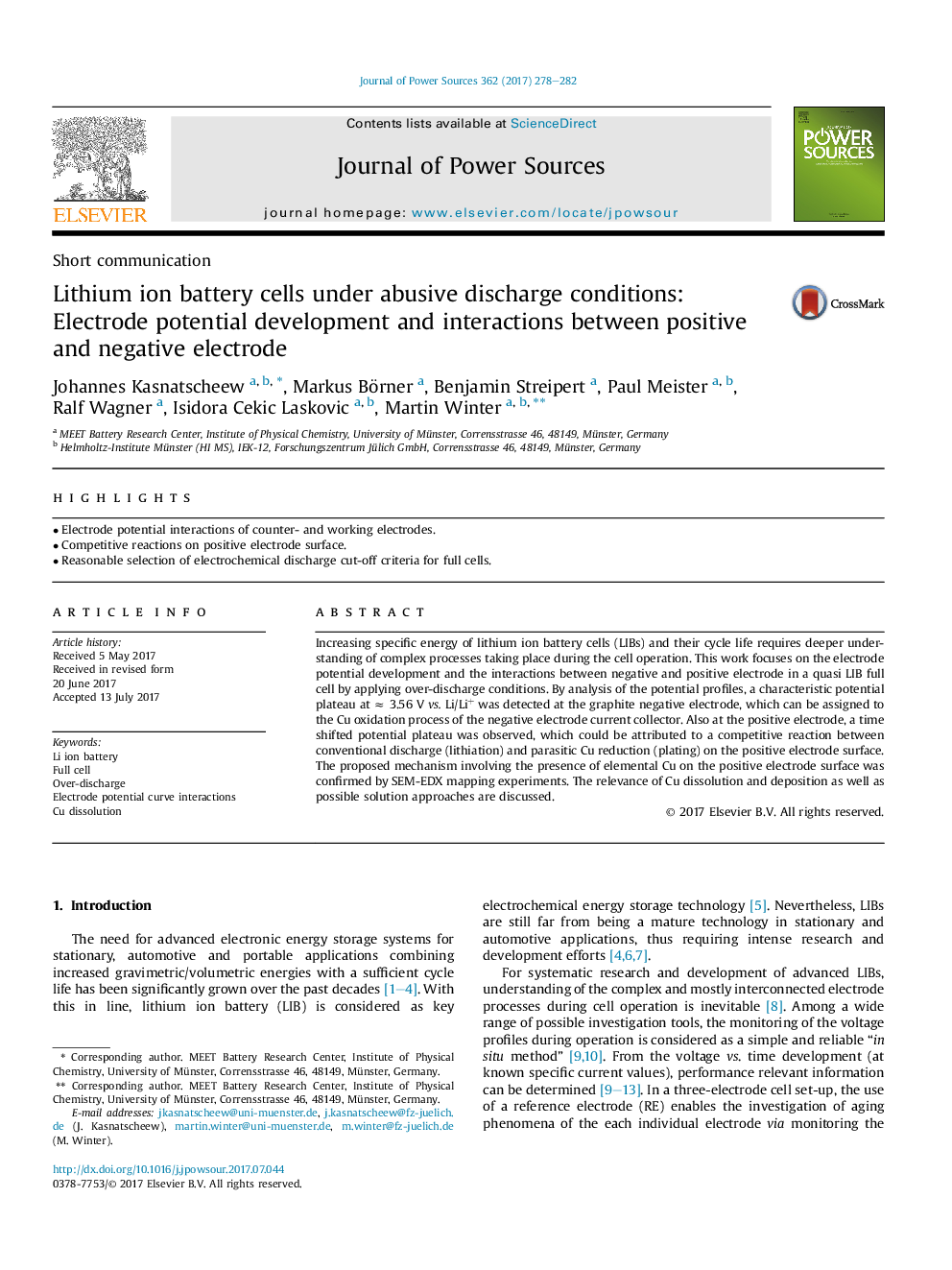| Article ID | Journal | Published Year | Pages | File Type |
|---|---|---|---|---|
| 5148824 | Journal of Power Sources | 2017 | 5 Pages |
Abstract
Increasing specific energy of lithium ion battery cells (LIBs) and their cycle life requires deeper understanding of complex processes taking place during the cell operation. This work focuses on the electrode potential development and the interactions between negative and positive electrode in a quasi LIB full cell by applying over-discharge conditions. By analysis of the potential profiles, a characteristic potential plateau at â 3.56Â V vs. Li/Li+ was detected at the graphite negative electrode, which can be assigned to the Cu oxidation process of the negative electrode current collector. Also at the positive electrode, a time shifted potential plateau was observed, which could be attributed to a competitive reaction between conventional discharge (lithiation) and parasitic Cu reduction (plating) on the positive electrode surface. The proposed mechanism involving the presence of elemental Cu on the positive electrode surface was confirmed by SEM-EDX mapping experiments. The relevance of Cu dissolution and deposition as well as possible solution approaches are discussed.
Related Topics
Physical Sciences and Engineering
Chemistry
Electrochemistry
Authors
Johannes Kasnatscheew, Markus Börner, Benjamin Streipert, Paul Meister, Ralf Wagner, Isidora Cekic Laskovic, Martin Winter,
